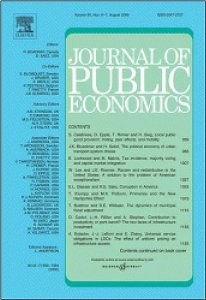
Fischer, C., Hübler, M. and Schenker, O. (2021). More birds than stones – A framework for second-best energy and climate policy adjustments Journal of Public Economics, 203:1--18.
-
Affiliated authorCarolyn Fischer
-
Publication year2021
-
JournalJournal of Public Economics
A well-known principle in public economics states that at least as many policy instruments as market failures are required to achieve an efficient outcome. In practice, however, regulatory power is often constrained, making implementing the first-best policy portfolio difficult or impossible. We analyze analytically and numerically how available policy instruments should be adjusted vis-à-vis the first-best to account for under-internalized secondary market failures. Consider, for example, the power sector: alongside the external costs of emissions, evidence suggests that consumers undervalue energy efficiency investments, and knowledge spillovers hamper research and development (R\&D) and learning-by-doing in low-carbon technologies. By exploring the potential and limits of policy instrument substitution, we provide suggestions for adjusting policies in second-best situations. We calibrate the theoretical model to the European electricity sector and find that, compared with the first-best policy portfolio, relying on carbon dioxide (CO2) pricing alone increases the policy cost of the EU CO2 emissions target by about 30%. Uninternalized R\&D spillovers contribute the most to this increase, and are the most difficult to address indirectly, even with subsidies supporting learning-by-doing. By contrast, almost 40% of the additional cost created by the absence of optimal energy efficiency subsidies can be recuperated by a second-best electricity tax.